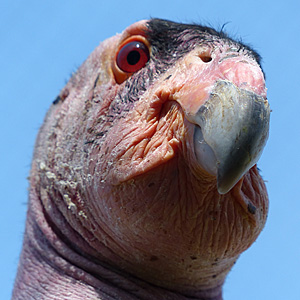
California Condor
Gymnogyps californianus
California Condors once were common across North America, but habitat destruction, poaching and lead poisoning ravaged these magnificent birds. In 1982, only 22 birds remained in the wild. They were so severely threatened that wildlife experts made the controversial decision to capture them and begin a captive breeding program. This move appears to have paid off. Although the California Condor remains one of the most endangered birds in the world, as of October 2012 there were 410 condors!
Improved Status
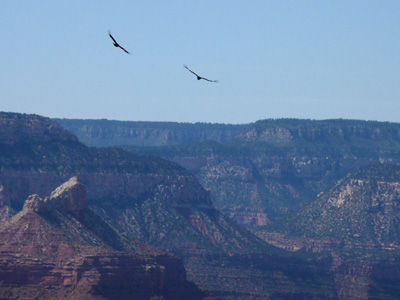

For ten years, California Condors could only be seen in captivity. Fortunately, the captive breeding program has been so successful that in 1992 some were reintroduced into the wild. The condors at the far right were flying above the Grand Canyon in the summer of 2011.
Beautiful Babies
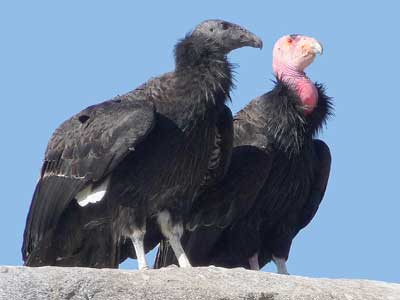
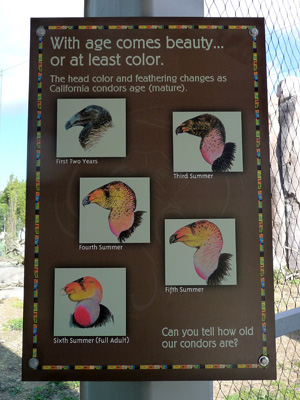

All California Condors are bald, but as this poster from the San Diego Zoo explains, they grow more colorful as they age. Young condors have black heads, and as they age, their heads get increasingly pink.
Recognizing Condors

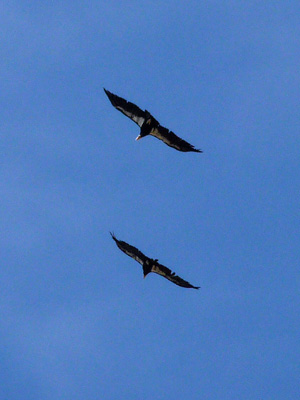
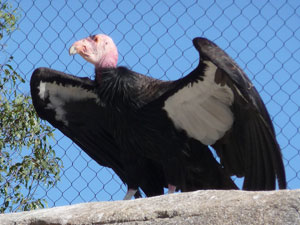
California Condors are the largest flying birds in North America. Their wingspan reaches nearly ten feet, but this may be difficult to recognize when they are flying above you. The easiest way to distinguish them from their more common vulture cousins is to look for the distinctive white band along the front edge of their wings. These bands in immature condors are still pronounced, but are more gray.
Want to Learn More?